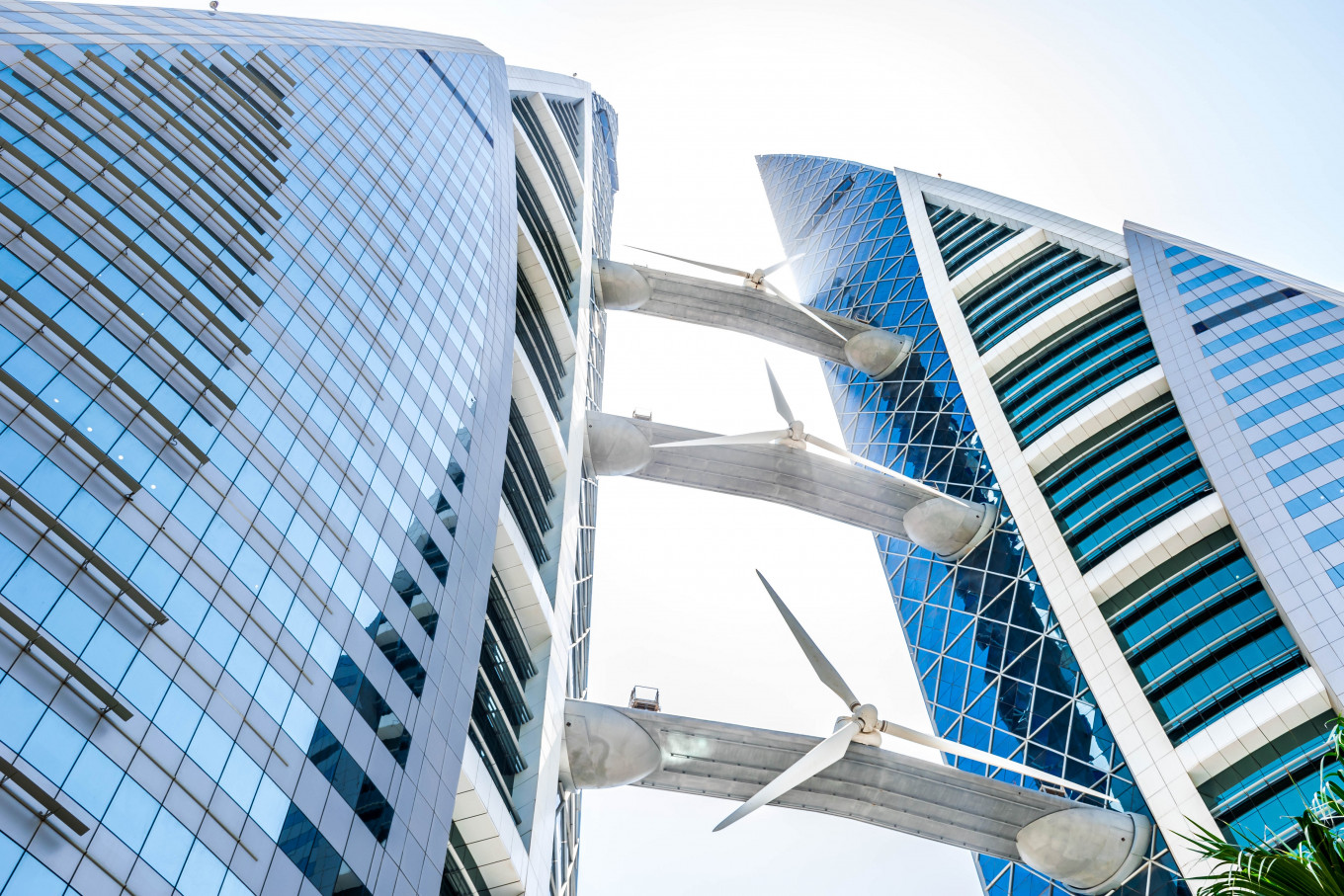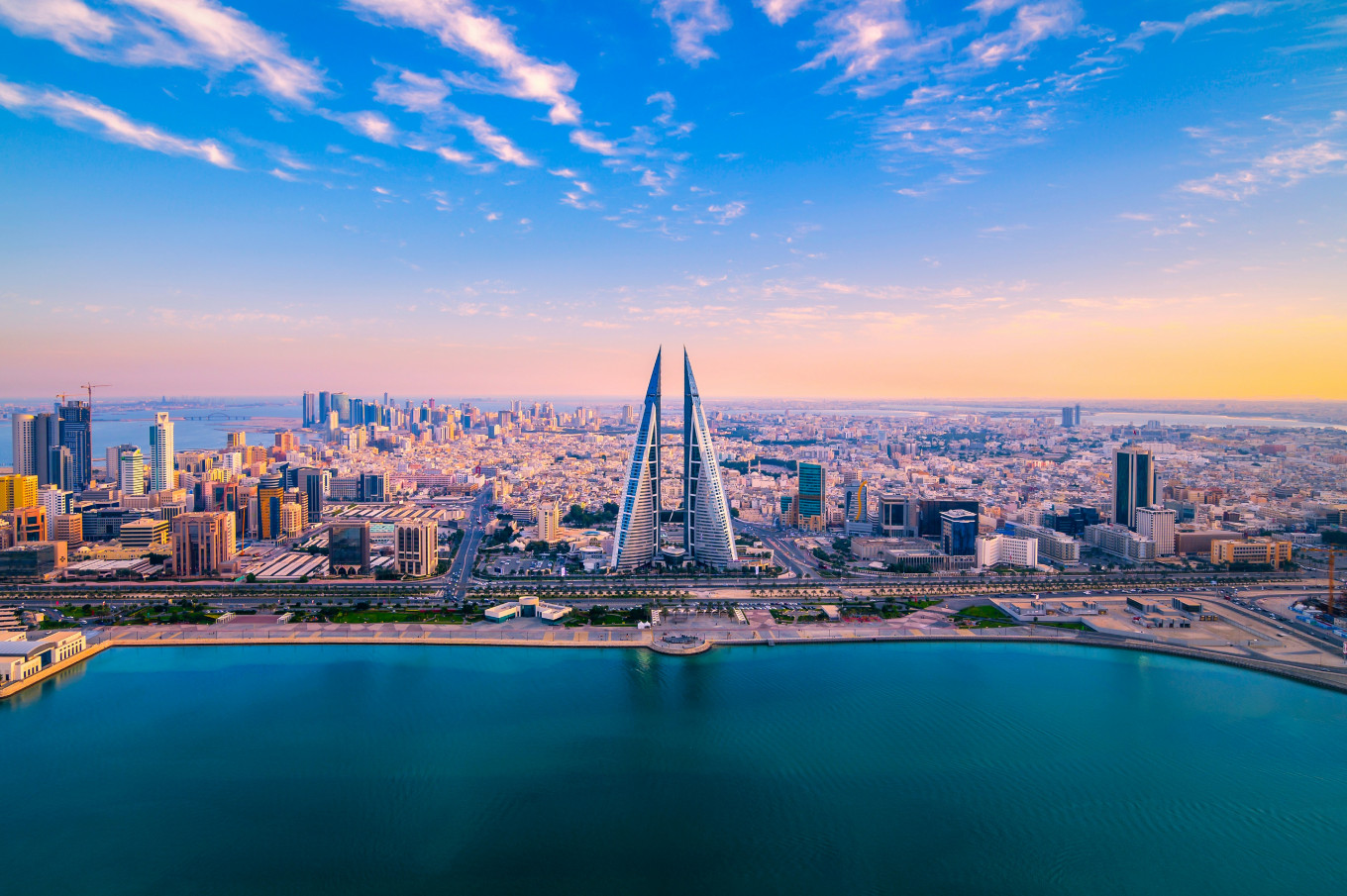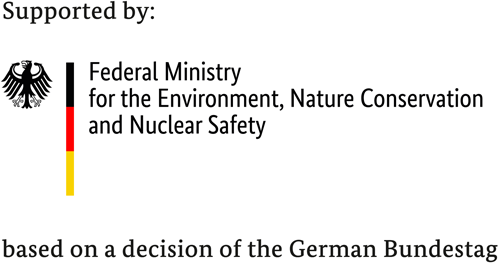Manama, Bahrain
Bahrain World Trade Center (BWTC)
Designed by Architectural Firm, Atkins and Architect, Shaun Killa, the strikingly beautiful Bahrain World Trade Center (BWTC) building has become synonymous with Bahrain. The skyscraper has a noteworthy reputation and has won multiple awards, not only for its ground-breaking architecture but for its innovative design as the first commercial building in the world to fully integrate large-scale wind turbines into its design. The buildings design was inspired by traditional Arabian wind towers with sustainability being incorporated from its conception, reducing its overall power consumption by harnessing the sea breeze and self-generating power. BWTC’s other renewable energy solutions include district cooling, water recycling, thermal insulation, reflection pools for evaporative cooling, low-leakage windows, and thermal glass with a low solar gain.

Project info
- Construction phase
- New construction
- Building type
- Non-residential building
- Detailed building type
- Retail / Trade
- Net floor area
- 88617 m2
- Land plot size
- 16500 m2
- Stories
- 50 stories
- Original construction year of the building
- 2008
- Project contact
- Help Desk
- Contact email address
- Marketing@bwtc.com.bh
Project team
- Architect(s)
- Atkins
- Construction contractor(s)
- Nass - Murray & Roberts, Norwin A/S,Elsam Engineering
- Energy efficiency consultant(s)
- Atkins
- HVAC consultant(s)
- Atkins
- Building services
- Mercury & Emco
- Other project team partners
- HAJ
Building Rating and Certifications systems
- Rating and certifications systems
- Other
- Other certification
- LEAF Award for Best Use of Technology within a Large Scheme 2006. EDIE Award for Environmental Excel
Building Envelope
External walls
- Description of construction
- Enough buffer spaces have been incorporated between the external environment and air-conditioned spaces to reduce solar gain on the building. Two car park decks above and on the southern side of the building minimise solar air temperature.
Roof
- Roof type
- Single Pitch Roof
- Description of construction
- There are deep gravel roofs that provide kinetic insulation, and energy efficient lighting, all of which demonstrate global leadership in the commitment to reduce demand of fossil fuel energy reserves.
- U-Value
- 0.48 W/(m²*K)
Openings and windows
- Glazing type
- Double glazed
- U-Value glass
- 1.8 W/(m²*K)
- G-Value glass
- 0.32
- Frame material / description
- 1.8
- U-Value frame
- 1.8 W/(m²*K)
- Overall u-value window
- 1.8 W/(m²*K)
- Description of construction
- Double paned window consist of two facing glass panels in a frame separated by a small space filled with non-toxic gas to improve insulation
Basement floor
- Description of construction
- Dense concrete core and floor slabs presented to the internal environment in a manner that will leave loads and reduce peak demand with associated reduction in air and chilled water transport system.
Technical Building Systems
Ventilation system
- Type of ventilation
- Mechanical ventilation system with heat recovery
- Description
- Total heat energy recovery heat wheel of fresh air intake and exhaust to recover "coolth" from the vitiated air and recover it to the fresh makeup air.
- Manufacturer(s) / products
- SKM
Space cooling system
- Primary space cooling system
- Centralised chiller │Usually a central system located in the basement
- Description
- The building is cooled by highly innovative air conditioning and cooling system using chilled water. It provide an environmentally sound alternative to conventional cooling system through recycling of water.
- Manufacturer(s) / products
- AHU's & FCU's - SKM Pumps- Grundfos
- Secondary space cooling system
- There are reflection pools at entry points of the building, providing local evaporative cooling.
Space heating system
- Primary Space heating system
- District heating
Water heater system
- Primary water heater system
- Combi system (system provides space heat & hot water)
- Description
- Water consumption saving initiatives include: All the toilets have been installed with sensor wash basin mixers and urinals. The irrigation system is timer based which allows efficient usage of water.
Lighting system
- Primary lighting system
- LED (Light emitting diode lamps)
- Description
- Amenity lighting and high-frequency, energy-saving fluorescent lighting with zonal control are included in the building design.
- Manufacturer(s) / products
- Pulsar / Philips / Osram
Shading devices
- Type of shading system installed
- Static (fix) shading systems as part of the building architecture (e.g. Maschrabiyya, porch roofs, pergolas)
- Description
- Energy reducing measures include innovative usage of shading across a significant proportion of projectile shading to external glass façade to minimise solar gains, deep gravel roofs that provide kinetic insulation, and energy efficient lighting, all of which demonstrate global leadership in the commitment to reduce demand of fossil fuels.
Other technical building systems
- Description
- Solar powered road lighting
Final Energy Demand
- Energy carrier (1)
- Electricity
- Annual cooling demand
- 265 kWh/(m²*a)
- Annual lighting demand
- 60 kWh/(m²*a)
- Total specific final energy demand
- N/A kWh/(m²*a)
Financial Aspects
- Project construction cost
- 124500000.00 EUR





